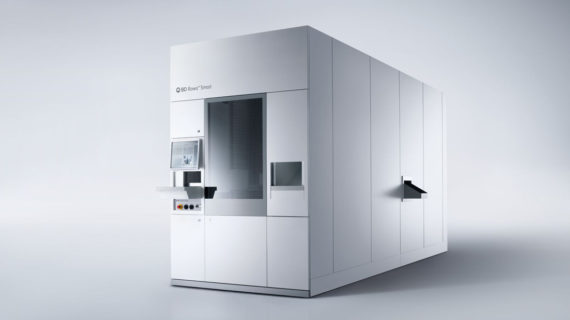October 09, 2020 – Hannah Mann is the proprietor of Kimberley Pharmacy Services (KPS) which has pharmacies in Broome, Derby and Fitzroy, and was awarded the coveted title of Pharmacy of the Year in 2015.
Interview with Hannah Mann – Kimberley Pharmacy Services, WA
Automation in Primary Health Care
Winning the Pharmacy of the Year made the entire team become even more aware of the breadth and depth of their services. It really highlighted the broader issues and how the wider needs of the community are met, rather than the everyday business of case-by-case care for each patient who comes into the pharmacy.
Pharmacy automation and dispensing systems are designed to reduce manual handling, minimising margin for error and facilitating faster and more precise sorting, dosing and packaging of medications, providing a complete end-to-end solution for pharmacy. We recently spoke with Hannah and invited her to share a little of her automation journey, spanning leadership, innovation and ongoing best practice quality of care for Aboriginal and Torres Strait Islander peoples.

Can you provide a little of your background and your journey in pharmacy?
Hannah: Kimberly Pharmacy Services (KPS) was established in 2009. We began in a tiny 54 square metre pharmacy—which we quickly outgrew—and remained in that pharmacy until we relocated approximately eight years ago. On reflection, that was perhaps a little longer than we had initially anticipated. KPS began to address what we considered was a genuine gap in community pharmacy engagement with Aboriginal services and specifically, Aboriginal health services.
This division of health care is quite a specialty area, demanding considerable effort, focus and hard work for the entire team. We can’t do that if we’re distracted by other elements of our community pharmacy in Broome, Western Australia, which is a dedicated service for Aboriginal and Torres Strait Islander people from remote areas. Our pharmacy model is quite different to traditional pharmacy. The services that we provide are structured on culturally safe medication access, addressing the barriers our patients encounter accessing medicines and understanding many issues. The focus is to work within communities and work closely with our patients, improving their health outcomes by dealing with what pharmacists best excel at: managing medicines.
What triggered your automation journey?
Hannah: The nature of our work and over-arching mantra maintains a focus that is squarely on the patient. KPS lifts patient engagement to another level in and around the community environment, catering specifically to the individual patient needs that require a high level of engagement on behalf of each of our pharmacists. A key element for KPS is the need for pharmacists to engage in more direct patient critical care and less of the administration-centred work—and that is deliberate.
Our model of pharmacy is principally pharmacist first. We want that level of clinical input for every patient who enters our pharmacy with a script. In considering clinical review medication education, we are not able to do that if our pharmacists are unnecessarily engaged in administration. In all honesty, we needed to step away from the paperwork and administratively draining components of our business. In that way, we could position the pharmacy purposefully on patients remotely and within the pharmacy setting, ensuring we could provide the best service and deliver exceptional clinical care without the distraction of routine pharmacy tasks, such as stock replenishment and manual pharmacy functions.
In terms of evaluating automation, what impacted your decision primarily?
Hannah: While not an insignificant capital cost, it was not a question of should we automate, it was a given that we should. It was just a matter of the mechanism and the timing, doing more to engage in every level of patient care. The solution in achieving our goals for our pharmacy and those of our patients was clearly automation, and each aspect of our business branched out from this.
We had to embrace automation from a technology and systems perspective as we wanted to avoid a situation where we became too busy and the quality of our care declined. So that’s where I began to focus, automation was not about reducing staff and replacing anything, as quite often that is what people consider automation is. It was about business growth and ensuring our business systems and processes remained ahead of this growth.
I understand you installed your robot earlier this year?
Hannah: Yes, and can I add that the timing was perfect. When we completed the refit, it was the weekend before border restrictions and biosecurity enforcements. I can only imagine if we were trying to install automation during border restrictions and biosecurity challenges. Our refit involved consideration of many aspects of patient engagement and the desire to have pharmacy operate as a dynamic health centre. We developed key concept rooms as part of the refit that would accommodate more than one person and the pharmacist, with the patient entering the pharmacy and engaging in a private consultation.
Even if just filling a script, we need to ensure everything is done in a culturally appropriate way where we are sitting with patients and are fully engaged. We can then identify other elements that could be discussed as they relate to health and utilise the face-to-face time with the patient to do more than just dispense medicines.
Following the installation of the Rowa, what were the direct benefits you saw to workflow and largely the removal of the administrative function, affording the opportunity to focus on the needs of the patient?
Hannah: At a fundamental level, improved accuracy in ordering saves considerable time. Because we’re in a remote area, our stock ordering must be accurate as we are waiting three days for our general order to arrive. So, if our stock levels are not correct, we run the risk of not being able to fly medications to patients in some of our remote clinic locations. We only have one opportunity a week and if the medicine does not arrive, that is one entire week the patient must wait for their medicine. Previously, we spent a large amount of time on stock management and ordering, which we don’t have to do anymore. We know exactly what’s in the Rowa at any given time, and I no longer lose sleep over stock management.
Ordering became such a critical point for us, and with the Rowa, we are doing great as stock management is terrific. We also installed a V-motion screen that has assisted to control stock in our pharmacy and manage what we believe is important. And really, it was a golden opportunity to de-stock and reduce the clutter. It allowed KPS to consider what was important when providing healthcare solutions, to sit back and consider the needs of our patients and assess what we stocked at the pharmacy.
Can you share a snapshot of the future for KPS? As you look ahead, what are your pharmacy goals?
Hannah: I think particularly with Aboriginal peoples’ health, we need more pharmacists working with patients—it simply must happen. We need to address issues around culturally safe pharmacy practice. We need to make sure that Aboriginal peoples, regardless of the KPS pharmacy they are accessing, receive health solutions and medicines from pharmacists who understand what it means to be culturally safe in practice.
Doctors can do the best they can and prescribe amazingly well, including perfect drug regime for patients, but if patients don’t take their tablets, it’s never going to work. Pharmacy has a critical role to play in making sure that patients, extending to Aboriginal patients in general, have a really good understanding of why they’re taking those medicines and how they work so they feel empowered and involved in the choices around their healthcare outcomes. I think pharmacy plays such an important part in that. That’s something we need to focus on as health professionals. Let’s look at our pharmacy and scope of practice from all angles to all Australians, not just the majority.
To discuss your pharmacy workflow and automation options, contact your local BD Rowa Territory Manager:
VIC/TAS Territory Manager – Kelvin Suker
NSW/ACT Territory Manager – Mai-Lan Tran



